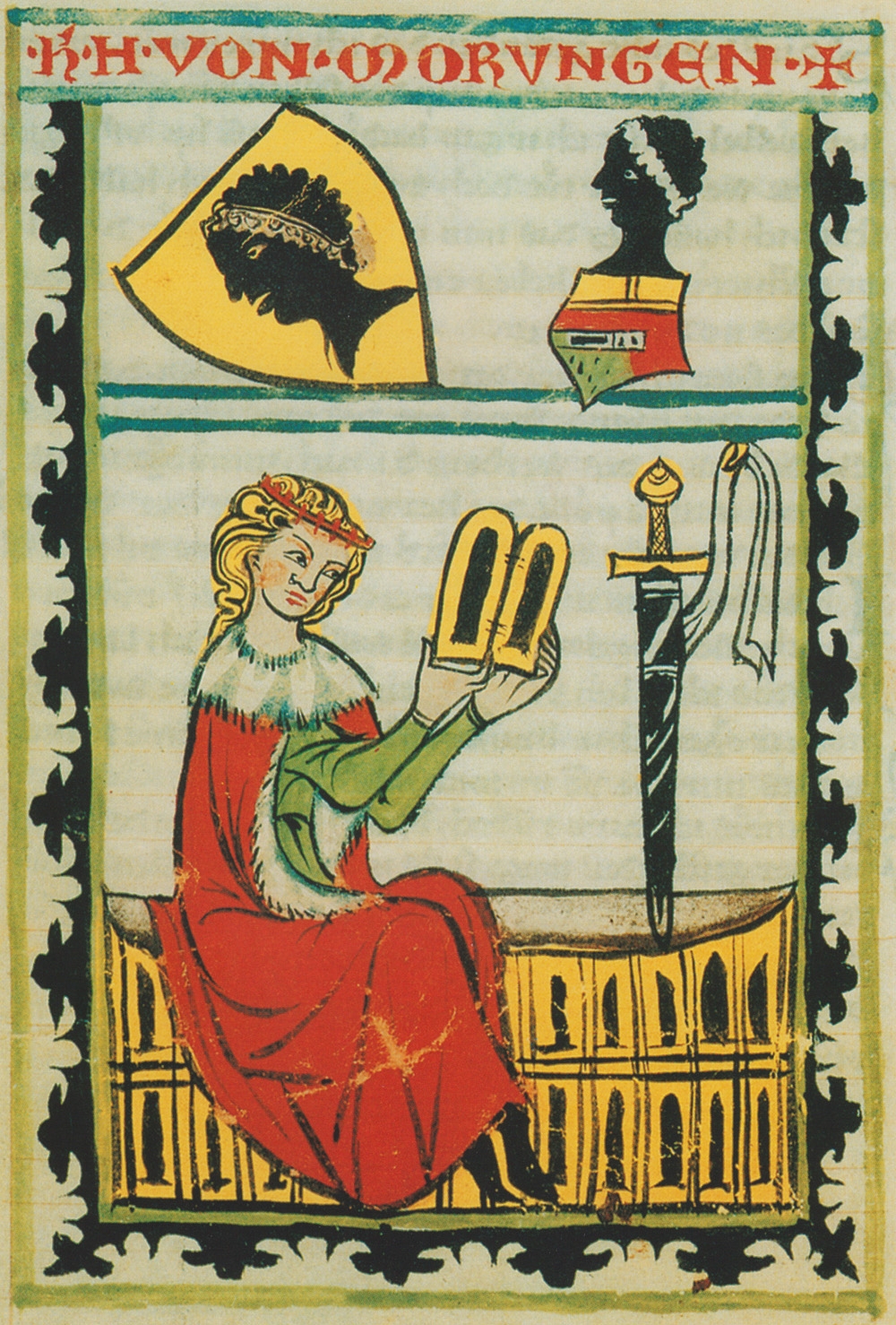Weingarten Manuscript on:
[Wikipedia]
[Google]
[Amazon]
The Weingarten Manuscript (German ''Weingartner Liederhandschrift'') is a 14th-century 
 The manuscript includes the following Minnesänger:
The manuscript includes the following Minnesänger:
Facsimile
{{Authority control 14th-century illuminated manuscripts Middle High German literature Middle High German manuscripts Minnesang Literary illuminated manuscripts Poetry anthologies
illuminated manuscript
An illuminated manuscript is a formally prepared manuscript, document where the text is decorated with flourishes such as marginalia, borders and Miniature (illuminated manuscript), miniature illustrations. Often used in the Roman Catholic Churc ...
containing a collection of Minnesang
(; "love song") was a tradition of German lyric- and song-writing that flourished in the Middle High German period (12th to 14th centuries). The name derives from '' minne'', the Middle High German word for love, as that was ''Minnesangs m ...
lyrics. It is currently in the Württembergische Landesbibliothek
The State Library of Württemberg ( or WLB) is a large library in Stuttgart, Germany, which traces its history back to the ducal public library of Württemberg founded in 1765. It holds about 4 million volumes and is the fourth-largest library ...
, Stuttgart
Stuttgart (; ; Swabian German, Swabian: ; Alemannic German, Alemannic: ; Italian language, Italian: ; ) is the capital city, capital and List of cities in Baden-Württemberg by population, largest city of the States of Germany, German state of ...
, with the shelf-mark HB XIII 1. In Minnesang scholarship it is referred to as Manuscript B.
Along with the Codex Manesse
The Codex Manesse (also or Pariser Handschrift) is a (a German term for a manuscript containing songs) which is the single most comprehensive source of Middle High German ''Minnesang'' poetry. It was written and illustrated manuscript, illustr ...
(MS. C) and the Kleine Heidelberger Liederhandschrift (MS. A) it is one of the major sources of Minnesang texts from the beginnings (around 1150) to the end of the "golden age" (around 1230).

Description
The manuscript comprises 158 folios and is 15cm×11.5cm in size, the small size suggesting that it was for private use. It contains collections of lyrics by 31 poets: 25 are named Minnesänger and the other six are not named, but the authors are identifiable from texts preserved in other MSS. The MS. contains miniatures of the 25 named Minnesänger, two half-page, the rest full-page. Most of the poems are love lyrics but among the anonymous material are a poem in praise of the virgin ("Marienlob"), and the "Minnelehre" ("Art of Love") of Johann von Konstanz. The ordering of the poets broadly reflects their place in the social hierarchy, starting with theEmperor Henry VI
Henry VI (German: ''Heinrich VI.''; November 1165 – 28 September 1197), a member of the Hohenstaufen dynasty, was King of Germany (King of the Romans) from 1169 and Holy Roman Emperor from 1191 until his death. From 1194 he was also King of Sic ...
, followed by the counts and then other knights.
History
The manuscript was written in the first quarter of the 14th Century, possibly inKonstanz
Konstanz ( , , , ), traditionally known as Constance in English, is a college town, university city with approximately 83,000 inhabitants located at the western end of Lake Constance in the Baden-Württemberg state of south Germany. The city ho ...
. Similarities between the Weingarten MS. and the Codex Manesse in both the texts and the ordering of material imply that they share a common source, now lost.
The MS. is thought to have belonged to the Cathedral Library in Konstanz and the commissioning patron is commonly taken to be Heinrich von Klingenberg, Bishop of Konstanz 1293–1306.
Poets
 The manuscript includes the following Minnesänger:
The manuscript includes the following Minnesänger:
Notes
References
* * *External links
Facsimile
{{Authority control 14th-century illuminated manuscripts Middle High German literature Middle High German manuscripts Minnesang Literary illuminated manuscripts Poetry anthologies